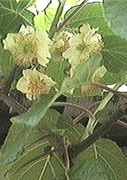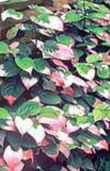TIP: MAKING SYRUP
When boiling the sap you have collected from your trees, you should use
as large and shallow a pan as will fit on your stove or burner. The
disadvantage to using an indoor stove, is that there is a tremendous
amount of steam produced. If you need heat and humidity in your house,
it may be okay, but you should probably only make small batches at a
time (especially your first batch so you'll know what you're up
against.)
It takes a lot of sap for a little syrup - about 40 parts maple sap to make 1 part maple syrup
(10 gallons sap to make 1 quart syrup).
A commercial stainless steel pan, about 4-6 inches deep will allow
quicker evaporation. These can be found at restaurant supply companies
to use on buffet steam tables, though of course any large pot can be
used. Wood cooking stoves are perfect, as you can remove the burner
covers and control the fire pretty well, but you can use a household
gas or electric stove as well (just be certain to watch the boiling sap
or you'll have a very sticky mess down in your stove to clean up.) For
cooking outside, build a fire pit with a grate to hold the pan, then
build a fire underneath. It's harder to control the fire and keep it
hot, but it can work. We actually begin the boiling process outdoors,
then move to the kitchen to complete the syrup after it has boiled down
to about one half the original level. This way, most of the steam is
let off outside.
Once the sap has boiled down to the point at which it begins to get
thick, continue boiling, but keep a close eye on it, as it will burn
very quickly as is reaches syrup stage. There are several ways to test
for completed syrup. One is dip a spoon into the boiling sap and if it
sticks to the spoon and looks thick, you're finished. Another is to
allow the temperature to reach 219F, then remove it from the heat.
Finished syrup will have a little sediment in it and this can be
filtered by using a cheesecloth or fine screen filter. After cooling a
bit, the syrup can then be bottled or canned, preferably in glass
containers.
SEE: COLLECTING SAP
|
 Chinese
Gooseberry (Tend Li Gen) Actinidia chinensis
- Deciduous vine with
fragrant
white blooms that produce small edible fruits. The fruit is eaten
raw or used in producing jams, jellies, or dried for later use.
Both
male and female plants are necessary for fruit production.
Fruits,
leaves and roots have been used to treat kidney stones, rhuematism and
cancer of the esophagus. The plants prefer a well-drained sandy
loam
in full sun or partial shade. This species is the parent of
modern
kiwi cultivars. Growth is rapid and the plant will soon
reach
20ft
in length. Hardy to 10F (-17.7C); height: 30ft.
Chinese
Gooseberry (Tend Li Gen) Actinidia chinensis
- Deciduous vine with
fragrant
white blooms that produce small edible fruits. The fruit is eaten
raw or used in producing jams, jellies, or dried for later use.
Both
male and female plants are necessary for fruit production.
Fruits,
leaves and roots have been used to treat kidney stones, rhuematism and
cancer of the esophagus. The plants prefer a well-drained sandy
loam
in full sun or partial shade. This species is the parent of
modern
kiwi cultivars. Growth is rapid and the plant will soon
reach
20ft
in length. Hardy to 10F (-17.7C); height: 30ft.
 Japanese
kiwi (Variegated Kiwi) Actinidia kolomitka
- Deciduous vine with
pretty white blooms producing sweet fruits which are eaten raw or used
to produce jellies and jams. Both male and female plants are
needed
to produce fruit. The heart-shaped green leaves are splashed with
pink and white and are often cooked and added to soups.
High in
vitamin
C (up to 5 times the amount contained in black currants). The plants
prefer
a well-drained soil in full sun or partial shade (fruit production is
better
in the sun). Fruits are produced on second year wood. A very
attractive
and useful plant. (Cats love this plant, so it may require some
protection
from them.) Hardy to -30F (-34.4C); height: 30ft. (vine)
Japanese
kiwi (Variegated Kiwi) Actinidia kolomitka
- Deciduous vine with
pretty white blooms producing sweet fruits which are eaten raw or used
to produce jellies and jams. Both male and female plants are
needed
to produce fruit. The heart-shaped green leaves are splashed with
pink and white and are often cooked and added to soups.
High in
vitamin
C (up to 5 times the amount contained in black currants). The plants
prefer
a well-drained soil in full sun or partial shade (fruit production is
better
in the sun). Fruits are produced on second year wood. A very
attractive
and useful plant. (Cats love this plant, so it may require some
protection
from them.) Hardy to -30F (-34.4C); height: 30ft. (vine)